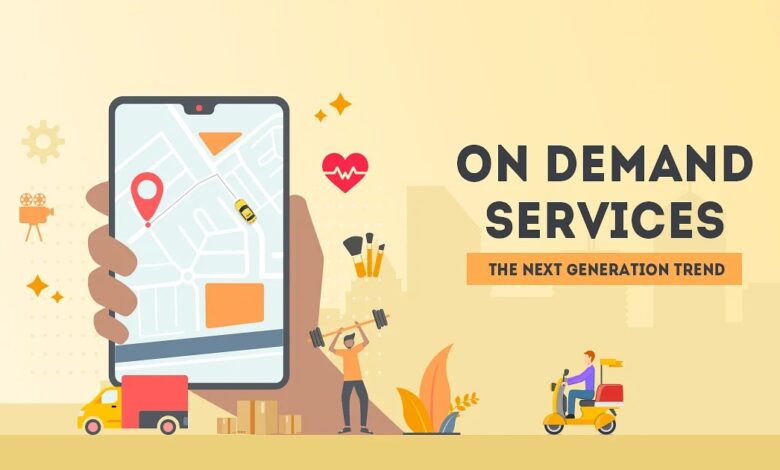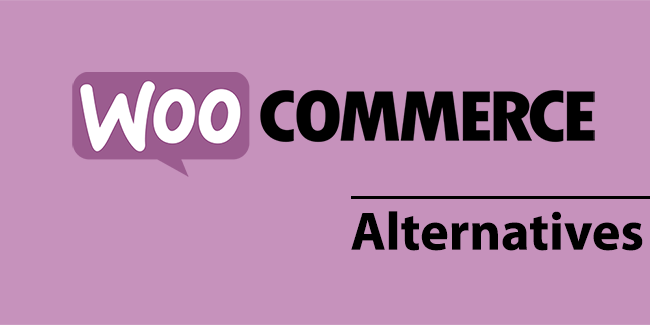Everything you should know about On-demand Services In 2021

This post will explain on-demand services. Uber, Instacart, Netflix, and Grubhub– on-demand service apps have smoothly and sweepingly entered our regular lives. At one point, the new wave of on-demand service portable applications for iOS and Android marked a clear reversal in how companies supply their services to consumers. Not just is it that everybody is so hectic with their careers and households that there is no time left on regular tasks like shopping, cooking, driving, or house cleaning. There have been a variety of global societal changes in the current past that resulted in the growing popularity of on-demand services.
Everything you should know about On-demand Services In 2021
In this article, you can know about on-demand services here are the details below;
These useful mobile apps aim to target consumers who need fast and easy access to services. In reaction, the market satisfies this demand creating the ideal buying environment where people can be sure about the quality, benefit, and reliability of the service delivery procedure.
We’ve gathered and evaluated the recent statistical information and are ready to provide an extensive on-demand market landscape overview followed by some fundamental rules of successful on-demand service app advancement. In this article, we will additionally look into what an on-demand service platform is and how this company model works, what types of on-demand service apps are there, and what steps you need to require to make your own on-demand service app.
What is an on-demand service app?
On-demand service application are service platforms that connect waiting-time-sensitive clients with independent service providers or agents. Such an app functions as a conciliator in between a company and a customer, allowing them to discover each other in the first place and take part in a customer-provider relationship on equally satisfactory terms. These deals are different from those in a standard employer-employee relation. The negotiation of these relationships does not fit any standard model of cooperation either. Rather, it is a massive reconsidering of labor laws that is still ongoing. Also check business concierge services.
These applications have actually acquired their appeal due to their ability to meet the demand of each specific person. Furthermore, as the number of mobile users has increasing, user expectations shaped by this time have also increased so much that users anticipate to get what they require at nearly any provided moment by tapping a couple of times on the screen. The bar has actually been raised so high that there is no other alternative than comply with the standards.
To give you a more precise image of the on-demand service market landscape, we suggest you have a look at some modern data, trends, & report.
According to the National Technology Readiness operation (NTRS,) from 2018 to 2019, the United States on-demand economy apparently grew by 18%. Likewise, the report offered the analysis of participation in the on-demand economy by classification in 2016-2019:
Kinds of on-demand service apps
The essential part of the on-demand industry is knowing what people want and which method of getting it is the most natural for them and smooth for the agent. Basically, there are three choices. Clients and customers of a company can access services following business-to-customer (e.g., Netflix,) business-to-business (e.g., Glovo’s upcoming B2B logistics system,) or customer-to-customer (e.g., Airbnb) model.
Classifications of services and products delivered within the on-demand organization design structure also vary significantly. No thing whether it is B2B, B2C, or C2C– the receiving celebration will appreciate it if the platform is not only efficient in linking them with the service provider but likewise can save their time and make their life a bit better along the way. As of today, there are a whole of classifications in which such improvements have ended up being and consistently shown practical.
In a manner, all these categories can be gathered together to form a group of online marketplace application.
As a variety of eCommerce app, an online market is an on-demand platform where product or service is provided by numerous 3rd parties. On-demand marketplaces are per se an parasol term that covers a whole lot of subcategories, consisting of but not limited to:
oConsumer products: Etsy, eBay, and Poshmark
oCrowdfunding: Kickstarter, Patreon, and Gofundme
oEducation: Udemy
oRecruiting: Indeed, Glassdoor
oDelivery: Instacart, Postmates
oFood: Seamless, Doordash, and OpenTable
oTransportation: Uber, BlaBlaCar, and Lyft
1. Transportation: logistics & taxi-hailing
On-demand transit isn’t brand-new. Dial-a-ride has actually been around for a long time and is still in use. However, technology has progressed to make on-demand transportation services a lot more accessible to a larger audience. That said, it must be noted that the worldwide on-demand transportation services market is segmented. There is distinction by type, vehicle type, and business design. For that reason, we can single out apps for guest transport and products transportation. Of course, the discussion of the on-demand marketplace would be incomplete without discussing passenger ride-hailing services like Uber and Lyft. Such on-demand companies can sufficiently compete with conventional taxi societies, making the latter rethink how they deliver their services and how to enhance the client experience. With taxi e-hailing platforms, people are totally free to buy a trip at any time and almost anywhere. Also, what makes on-demand ride-hailing companies stand apart is their reasonably bigger fleet size, broader reach, high level of versatility, dexterity, and financial investment abilities.
It is not as cut and concentrated in the case with logistics on-demand app as it is with traveler transport apps. On-demand logistics is a highly questionable sector. Tellingly, the 2 industry-leading providers UberRUSH & Shyp both eventually determined to close up store instead of fighting to stay afloat. The on-demand logistics niche has lot of pitfalls. Transport services are intricate, and there are lots of things to think about when working out the logistics: fleet maintenance, labor force training and development, products dealing with, order tracking, and more.
So no wonder that start-ups feel rather uncertain about attempting to be successful by operating in this market section. On the reverse side, those who do select to attempt will face little to no competition.
2. Food & grocery shipment
The on-demand shipment design is here to stay, and the ongoing success of on-demand food & grocery delivery apps shows the point. In April 2020, the international Google examines for “food shipment” sky-rocketed, reaching new heights. The pandemic crisis has affected the method individuals get groceries and food.
The food & grocery shipment sector is certainly among the most popular on-demand service categories. And its popularity has actually never ever been as predictable and consistent as it is now. For example, according to Statista, as of March 2020, the U.S. market experienced substantial growth in grocery shipment app downloads due to the coronavirus . On tip of it, according to Brick Meets Click AND Mercatus Grocery Survey, U.S. online supermarket sales reached $7.2 billion in June, which is a 9% boost over May. 45.6 million families utilized delivery and pickup services in June 2020 compared to 16.1 million in August 2019. Also check business translation services.
That said, the increased appeal also suggests a greater competition rate. However, it is not a bad thing at the end of the day. Online grocery shopping and food delivery app service providers’ development must not prevent you. Instead, it should influence you to make the most of what others have actually currently tested and proved reliable and launch your own item, including a twist to its function set. Thus, with the food & grocery offering best practices is to develop different items for consumers, delivery individuals, shop supervisors, and admins.
Apps like UberEats, GrubHub and Instacart, Glovo, and Postmates demonstrate that consumers require an on-demand shipment service to get groceries from their favorite grocery stores and food from their preferred restaurants without leaving house. It suggests on-demand food & groceries delivery is most likely to remain popular amongst consumers, so we must state more improvements in this sector are yet to come.
3. Health care & telemedicine
Whether you can’t obtain time to see a physician, you are in a far-off location, or you do not wish to expose yourself to the coronavirus, on-demand health care service apps exist to assist you.
The telemedicine market is quickly establishing now, continually embracing the most up-to-date technologies to ensure the end products’ high quality. Telemedicine apps are also referred to as medical professional on-demand applications, which indicates their main goal is to safely, safely, and flawlessly link individuals seeking medical assessment with medical professionals capable of providing it.
Utilizing on-demand apps like Zocdoc, Healthtap, Doctor on Demand, and LiveHealth Online, one can discover required professionals, examine their ratings and accreditations, schedule appointments, and get consultations online by means of a video call. Calling a doctor on-demand is not the solely feature of telehealth apps. Such apps can likewise can be found in convenient for remote patient tracking, collecting health data, asking for a physician check out, cordless testing, prescription tracking, and more. The full capacity is still to be discovered.
What can be stated with total certainty is that for on-demand health care apps to end up being legitimate, they should adhere to all relevant laws and guidelines, such as HIPAA, GDPR, and MDR. An intricate regulatory environment is not the only challenge, however. The growing competition and problems related to medical insurance management can stand in the method of your aspiration to make healthcare accessible on-demand to anybody who owns a mobile phone or a PC.
4. Physical fitness
Regular exercises are an essential part of a healthy way of life. In 2020, physical fitness apps can go above and beyond, offering you with highly individualized on-demand physical fitness services. The data on patterns in the fitness industry manifest the truth of the declaration:
To start with, an individual fitness instructor right on your smartphone or an extensive collection of home/gym workout programs at the reach of your fingertips is convenient. Then, it will be more bothersome to keep finding reasons to delay your hitting the fitness center.
The on-demand design is truly transforming the method the physical fitness industry works. With an on-demand fitness app, customers can ask for both online and onsite training assisted by a physical fitness professional of their choice. Simply picture your individual fitness instructor pertains to your living room and you state that you don’t seem like squatting, or you set up an online workout however do not show up. That’s rude. It is a genuine dedication, and you need to most likely be ready immediately for your workouts.
Online fitness markets are all set to benefit both fitness instructors and users requesting a workout. You will likewise get access to all other benefits inherent in the on-demand business design like versatility, dependability, simple booking and payment, rankings, and evaluations.
5. Charm
Mobile appeal apps are also starting to provide on-demand services to customers. Of course, it was possible to welcome an appeal master to your home prior to the pandemic. Nevertheless, now this all is getting to a whole brand-new level.
Beauty-on-demand has all opportunities to end up a successful investment. The year 2020 has begun the interruption of brick & mortar medspa and beauty parlor. Beautystack, BeYou, and Soothe are just a couple of on-demand appeal service applications for booking stylists and therapists. Individuals still want to invest money on quality personal care. It is simply the format of the reservation and providing of this care that has altered.
Using at-home hair salon beauty services, employing a charm professional to finish a makeover for an unique occasion, getting appeal items delivered to one’s house, scheduling a consultation at a beauty salon or medspa center, or getting any other skin care and wellness services at the comfort of one’s house– beauty-on-demand apps provide these services already today!
So, why not benefit from what the market has to use, conserve time, and decrease the chance of direct exposure to the coronavirus by delighting in one’s favorite beauty and health services in the house? After downloading the app, the user usually can easily schedule a regional appeal professional picking from among the alternatives listed on the app. When the booking is proved, a stylist contacts the patient, they set up the time and place for the consultation where the chosen services will be performed. Also check door to door services.
6. Entertainment
Entertainment-on-demand is growing. The intro of on-demand streaming services like Netflix and Amazon Prime has actually dramatically altered how people choose to watch TV programs, TELEVISION series, documentaries, and motion pictures.
Today, many video-on-demand services compete for potential customers’ company, while new ones launching increasingly regularly. The variety of on-demand consumers keeps growing accordingly. For instance, as described by Statista, in the 3rd division of 2020, the amount of Netflix paid supporters worldwide reached 195.15 billion.
Nevertheless, the competitors in this sector is strong. Not all video streaming startups are successful. A few of them all of a sudden stop working. This is precisely what happened to Quibi, a startup that raised $1.75 billion however stopped working just 6 months after it debuted in April 2020. So, there are great deals of examples to look up to and gain from. Success is fragile when it pertains to video-on-demand services One way or the other, individuals need entertaining material customized to their choices, and at the end of the day, one can never ever understand what concept can turn out another Netflix.
7. Home services.
Online on-demand home services are determined to grow by over USD 1.5 billion from 2020 to 2024.
All on-demand domestic services can be categorized as follows:
oHouse cleaning & repair services
oPacking and moving
oBabysitting
oPet care
oOthers
Online on-demand home service apps can give users access to a large swimming pool of registered professionals who will look after their homes, kids, and family pets. Clients require an easy tool for reserving cleaning and other house services online. This tool must likewise make it possible for rate comparison, guarantee each specialist’s credibility, and allow having a look at reviews and scores. Such a demand has actually given rise to many new online address services emerging in the form of both web and mobile app. Also, users can either want to request assistance from an autonomous organization that utilizes workers directly or go with a marketplace that acts as an arbitrator connecting consumers with specialized contractors.
Conclusion
A few of the most innovative digital items released to the market over the past years have actually been on-demand service apps. Thankfully, there’s still a great deal of space for brand-new entrants and a lot of niches left for on-demand service apps to fill. Delivering service straight to people who need it can actually change lives for the better.
If you have a concept for an on-demand service app but are not exactly sure where to begin, Vilmate’s team of app designers and designers exists to help you turn your concept into a reality! Reach out to us now, and let’s get talking!




